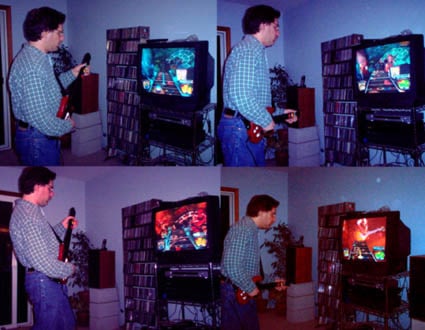Revenge of the nerds
Everywhere I look today I’m finding examples of how nerds (just like me) have phenomenal divergent thinking skills. Creative superpowers, activate!
One Up: Gamers Help Scientists Solve Molecular Puzzle That Could Lead To AIDS Vaccine [techcrunch.com] – Experts in one arena (biochemistry) connect with novices, aka experts from another arena (gamers), to solve a challenge they’ve grappled with for 15 years. This is a sweet blend of two of my favorite creativity-inducing activities: expert mind meets novice mind AND forced connections between seemingly dissimilar things.
And last week, FoldIt became more than just a cool idea, or an exercise for scientifically-minded gamers. Scientists have been attempting to decipher a protein called “retroviral protease” for over 15 years, as the protease is one of the key proteins that allows HIV to multiply and replicate itself in living cells. Using FoldIt, gamers were able to identify the structure of the protein – within a matter of 10 days-With the structure of retroviral protease unlocked, scientists can now begin taking the necessary steps to build a drug that could significantly slow the speed at which HIV develops.
Spurlock Penetrates The Nerd Herd In Comic-Con Doc [fastcompany.com] – It’s not totally surprising that fantasy and fandom are fantastic catalysts for creativity. Intriguing references to curation as preservation of youth and, consequentially, playful fuel for creative adults.
In a time when zombies, dinosaurs, knights and night-walkers dominate the network lineups and superheroes are the surest way to box office success (hopes are high for Whedon’s megawatt Avengers film, scheduled for release in May 2012), understanding Comic-Con’s creative alchemy has never been more relevant.
The 10 most gadgety Halloween costumes [msnbc.com] – These don’t really hold a candle to the Comic-Con costumery, but some of us have to start somewhere. And for the record, my dream is to one day rock out a fairly authentic Queen Amidala costume.
Stumped about what to dress up as this Halloween? How about your favorite gadget? Don’t think it’s possible? Well then check out these crazy examples. But since there isn’t much time left to make something elaborate, you could always fall back on dressing up like a zombie and carrying around your old VCRs and cassette players. Obsolete gadgets, returned from the grave!



